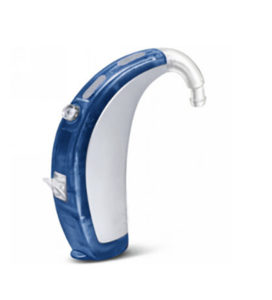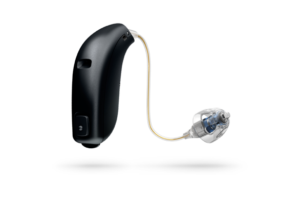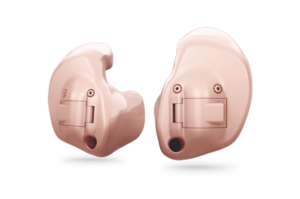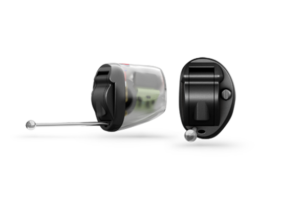Hearing aids are an important tool in effectively managing your hearing loss. Today there are a considerable number of choices in the styles and features available. The benefits of well fitted hearing aids can dramatically improve your quality of life.
Managing hearing loss is a process that involves using a number of tools and supports and the process does not begin and end solely with the hearing aid. Although acquiring hearing aids is an important step in the process of effectively managing hearing loss, it is only one step of many. Aural rehabilitation services such as speechreading classes, assistive listening devices, the support of family and counselling are also extremely beneficial steps involved in the effective management of hearing loss

Behind-The-Ear (BTE) Hearing Aids
These aids are the largest hearing aids and they are very reliable. BTEs have the most circuit options and offer more power than custom made units. BTEs rest behind your ear and are connected to the ear canal via plastic tubing and an earmold. The earmold is usually custom made from an ear impression to perfectly replicate the size and shape of your ear.
Directional microphones are available on BTE units and hearing aid wearers can have multiple programs for different listening environments. In addition, a telecoil (special device to help you hear on the telephone) is standard. The telecoil is not standard on any other hearing aid size.
BTE’s are suitable for all losses (mild to profound), but are mostly worn by those with a moderate to severe hearing loss, or those with persistent cerumen (wax) problems. BTE’s tend to be more durable and last longer than smaller devices reducing the overall cost because they do not need to be replaced as often.

Open-Fit,
Receiver-In-The-Ear (RITE),
Receiver-In-The-Canal (RIC) Hearing Aids
These hearing aids are specifically designed for mild to moderately severe high frequency hearing loss. This device amplifies sounds without blocking the ear canal, resulting in more natural sound quality. The casing that sits behind the ear and the earbud attaches to a narrow pre-molded tube. Receiver in the ear (RITE) or also known as Receiver in the canal (RIC) hearing aids look similar to the Open-Fit, but the receiver or microphone is external to the instrument and located in the ear canal.

In-The-Ear (ITE) Hearing Aids
These hearing aids fill up the entire ear opening or concha. The largest of the custom types, an ITE is also the strongest and provides the audiologist with the most flexibility to increase the volume or gain when programming the hearing aid. ITE’s are suitable for mild to severe hearing loss. Batteries typically last 10-14 days, longer than smaller aid styles and the ITE is large enough to fit advanced features, such as directional microphones, telecoils and program switches. 1/2 shell units are typically 1/2 the size of the In-The-Ear. The battery is a little smaller, and its average life is 7-10 days. Directional microphones are available.

Completely-In-The-Canal (CITC) Aids
These hearing aids are the tiniest custom hearing aids made. They require a “removal string” due to their small size and the fact that they fit deeply into the ear canal. Directional microphones and telecoils are not available due to space limitations, but the aids have multiple programs that can be accessed with a handheld remote. CIC’s are suitable for mild to moderately severe hearing loss. Many of the advanced digital CIC style aids are sophisticated enough to detect changes in the listening environment and automatically switch programs. They use more batteries as the batteries have a shorter life due to the small battery size.
